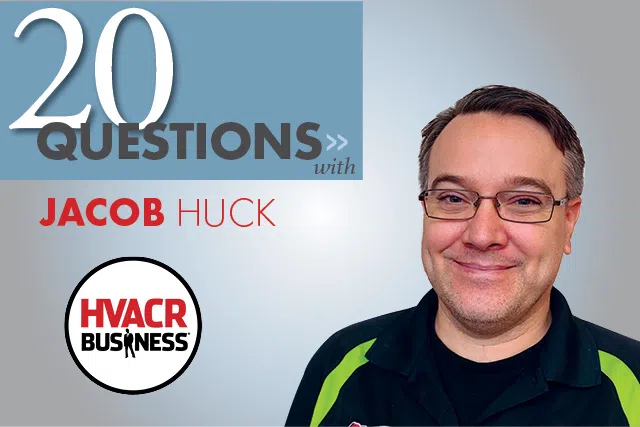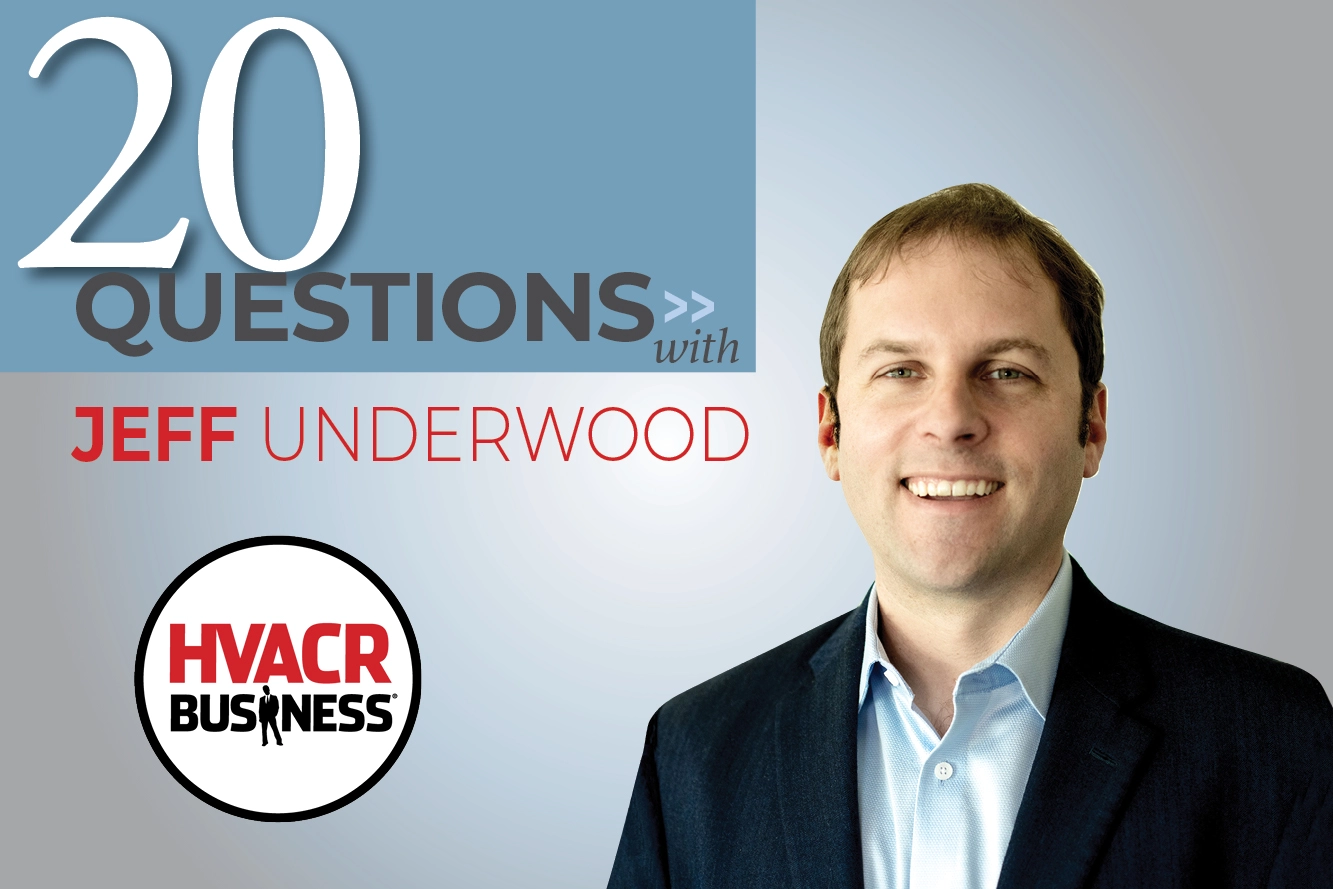We sat down with Jacob Huck, president of Williams Comfort Air in Carmel, Ind.. Huck discussed growth through acquisition, finding the right company and the importance of communication.
1. How long have you been in business?
The parent company, Williams Comfort Air, has been in business since 1966. We took ownership of it in 2007 and we’ve done acquisitions off and on since then.
2. Who is ‘we’?
Our ownership group. I call our company Round One and Round Two, because we actually sold it and bought it back. In Round One we had seven owners and Round Two, we have nine. I’m the president of the company. In this round of ownership, I have the largest share count.
3. What’s your business makeup?
We’re 98 percent residential. Our bread and butter is HVACR replacement. We also have a decent sized plumbing and sewer business. For 2020, we closed out at $65 million in revenue. And as far as the mix, maybe a third of that is plumbing and two thirds is HVACR.
4. How many have you acquired?
I was just doing the math on that and we have done 14.
5. How do you find companies?
That’s always the hard part. We typically find them through word of mouth. We make sure people know we’re always looking and then somebody will hear that Joe down the street is getting tired and doesn’t have a kid to hand the business off to. We typically find things that way. We’ve also sent out letters, trying to gather anybody who’s interested. And then, kind of a lesser-known path, is to talk to distributors.
6. Do you have an acquisition team?
We don’t currently, but that is something I feel like we need to add in the next year or two, given our size and our ability to acquire. There’s no reason we shouldn’t have eyes looking at all times.
7. What’s the due-diligence process?
The first and foremost questions are really about what kind of client base they have and how the revenue splits up. Client-base-wise, to match with our company, we’re looking for somebody who’s not really dealing with commercial clients, not really dealing with builders. We want to go direct to consumers. If we find a company that has a large percentage of new construction, it’s typically not going to be a good fit for us.
8. What other factors do you evaluate?
There are other things that make a company more preferable or less preferable. For example, if they have the exact same selling model as us, where basically we want to hold on to a customer with a maintenance contract, to earn the opportunity to replace the system when the time comes … if they’re doing the exact same thing, there’s typically less upside because basically we’re going to get the same results they had. If it’s a company that, for 30 years, has simply maintained systems and tried to not replace them, it’s going to be a much more valuable deal for us.
9. What makes a company attractive?
We typically need somebody with a great brand. We’ll look at Google reviews. We’ll make sure they don’t have a bad reputation in their market. We love seeing longstanding clients. They need to have an information system with their customers in it. I’m very data-driven, probably to a fault, and I like being able to look in and see that they do have repeat customers that go back quite a ways.
10. What’s a red-flag?
If they’re all paper-driven and they have no technology, that’s definitely a red flag for us.
11. What’s your growth strategy?
Mostly, it has been growth through acquisition in lieu of marketing. We’re trying to reach out to clients that they’re happy where they’re currently at and, candidly, no amount of advertising from us is going to get them to call us, so we’re going after those clients. We can also use it as a recruiting tool. You’ve probably not heard from anybody that it’s hard to hire people right now.
12. Has that helped?
We can buy a company with great technicians and just do what we have to, to hang on to them. We’re looking at expanding our footprint in other locations that I believe will happen this year. We really haven’t added any locations since 2015.
13. How do you fund your acquisitions?
We’re really rather unique in that we pretty much keep all the capital in the company. We don’t take much out. We’re financially in a spot where we have the cash outright. We do frequently try to get the owner to carry back a piece. It’s always good that your desires align with theirs.
14. How long does an acquisition take?
It is all up to the seller. Some guys, it’s their life’s project. They’re very hesitant. They don’t want to go too fast, and so you basically just go at their pace. Other guys are done with it. They’ve got almost like senior-itis from high school and they just want to move on. The fastest we’ve done an acquisition is two weeks. Realistically, if you don’t have to get funding, you should be able to do it in two to three months without much effort.
15. What’s the transition process?
We believe you just need to go in and rip the Band-Aid off. Literally on day one, when it’s announced, we start switching them to our information system, specifically on the office side, so booking calls and all of that. We then waterfall things out into the technician world throughout that first week so that by the time we get done with the first week, we’ve probably switched the majority of the technology and processes over.
16. Does that always work?
We play this by ear, because if you go too fast, you’ll basically alienate some of the people who are not comfortable. But we’re pretty good about keeping our finger on the pulse. We’re constantly checking in with them. We have meetings every day.
17. Do you keep any processes in place?
It really depends on how big they are. Smaller companies, we typically don’t take on most of their processes just because we’re oriented so differently. We have 420 employees. To do that, you have to have some fixed processes like payroll. But on the bigger companies, we absolutely want to hear what they’re doing. We love learning from their field managers how things operate.
18. How do you incorporate the management teams?
That’s probably the most difficult thing of all. We’ll happily give an employment contract to try to get them a little bit more secure with their role in it. But candidly, it’s really hard for a prior owner to change his role. We’ve done it. We actually have at least five prior owners that still work with us. But it’s a big mindset change and you have to work closely with them. With the non-owner managers, frequently we’ll find that they’re actually pretty excited about it because maybe the old owner was reluctant to change things.
19. How do you communicate the transition?
Once we’ve announced it to the new company, we typically shoot off an email letting everybody know to welcome them to the team. When we have our regular meeting, which last year has been an anomaly, often we’ll call it out and basically introduce them. For the team we’re acquiring, usually the morning of, we schedule a meeting on site to make the announcement. We try to keep it short. We don’t want to throw too much at them. And we, obviously, do this in person and then we meet with them individually.
20. What makes a smooth transition?
There’s always so many questions those first several days. Basically, every day that first week, we have a meeting first thing in the morning, and we tell them, “Go off and do your regular day.” We don’t want them to feel like how they serve customers is changing. It’s really more about the back office that’s changing.






